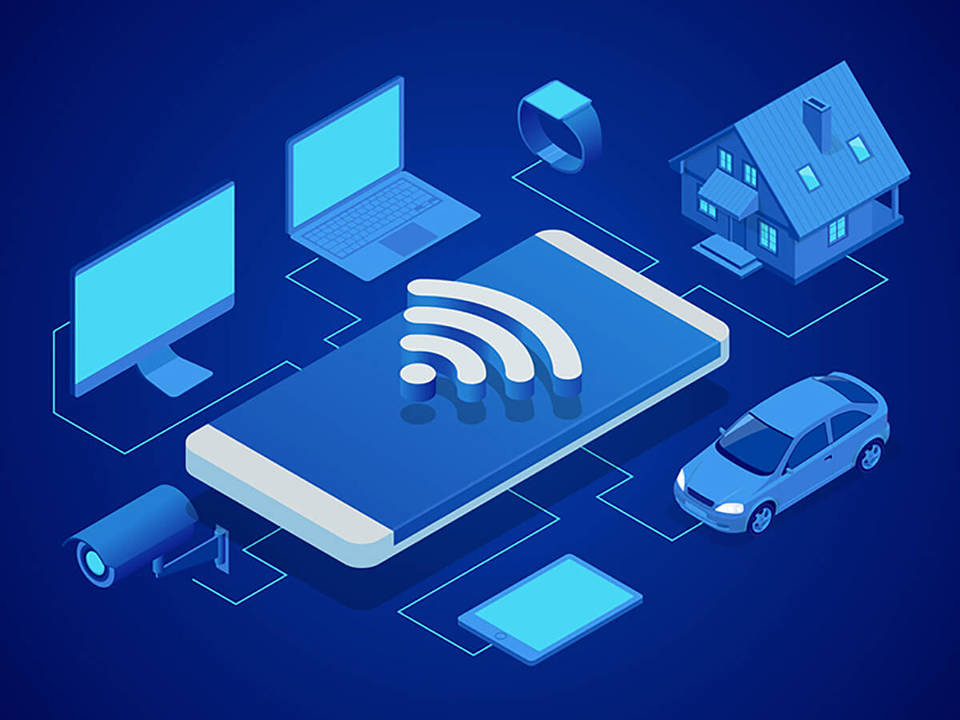Manufacturers are under fire for putting road safety at risk, with the latest in-car technology likely to distract drivers, according to experts.
Increased connectivity through smartphones, watches and tablets has helped drive the public appetite for new developments, with almost two-thirds (61%) of motorists interested in greater connectivity, according to a survey by Ipsos Mori for the RAC Foundation.
But the growing array of in-vehicle technology means the risk of driver-distraction is also increasing. Steve Gooding, director of the RAC Foundation, said: “There was a time when transport connectivity referred solely to how easy it was to get from A to B. But, with the telecoms revolution, there is increasing debate around connected cars and drivers.
“Technology brings us huge benefits. We just need to make sure it does so safely.”
Attention could be diverted due to some event, activity, object or person, within or outside the vehicle. However, as connected services increase, it is in-vehicle distractions which are causing concern among road safety experts.
Dave Nichols, professional engagement officer at Brake, told Fleet News: “Any technology that enables drivers to perform tasks that have nothing to do with driving, including in-built infotainment systems which allow the checking of social media, is potentially as distracting and dangerous as using a mobile phone.”
Call for regulation
In Britain, the Department for Transport (DfT) reported in 2013 – the latest data available – that there were 2,995 collisions where distraction in the vehicle was listed as a contributory factor, making up 3% of all accidents. Of these, 84 were fatal, equating to 6% of all fatal accidents.
“Vehicle manufacturers have made great strides in producing safer vehicles that protect both occupants and vulnerable road users, which is why it’s so disappointing that they continue to develop in-vehicle technologies that can distract the driver,” said Nichols.
“Anything that takes the driver’s full attention away from driving is incredibly dangerous and manufacturers have a responsibility to make sure people know of the dangers.”
The road safety charity is calling on the Government to regulate the use of in-vehicle technologies, and to implement tougher penalties for distracted drivers.
However, the Society of Motor Manufacturers and Traders (SMMT) has defended the growth in connected-car features. An SMMT spokesman told Fleet News: “Manufacturers go to great lengths to ensure infotainment systems prioritise the most important functionality so that interaction is as straightforward and intuitive as possible, and to encourage drivers to use technologies in the safest ways.
“The increasing uptake of safety systems such as autonomous emergency braking, adaptive cruise control and lane departure warning, as we move towards full autonomy, is also helping to mitigate the effects of driver distraction, and will eventually eliminate this risk.”
Driver distraction can be classified into four sub-categories depending on what the source of distraction is. Cognitive or mental distraction occurs when the driver’s mind is engaged with other tasks; visual distraction occurs when a driver takes their eyes off the road; auditory distraction occurs when a driver is subjected to noise that diverts their attention; and manual distraction occurs when the driver takes their hands (either one or both) off the wheel.
These four sub-categories are not mutually exclusive and often drivers experience more than one type of distraction at the same time.
How safe or unsafe the distraction becomes also depends on its intensity, the driving situation and its timing.
Texting on a mobile phone, for example, would involve high levels of cognitive, visual and manual distraction, but a low level audible distraction.
Speech-to-text or voice control, however, would involve a low level of manual distraction, a medium level of visual and audible distraction, and a high level of cognitive distraction.
Researchers at the Transport Research Laboratory (TRL), argue that the impact of distraction on safety depends on the duration of the distraction and how frequently it happens – the length of time for which the driver is exposed to the additional risk.
For example, tuning the radio may cause visual, auditory and manual distraction, but for only a very short period of time; engaging in a hands-free telephone conversation does not require so much visual attention but the cognitive and auditory distraction is likely to extend for a significantly longer period of time – the length of the call.
“What is clear from research is that drivers knowingly engage in activities that they consider distracting,” the TRL said in a report for the Institute of Advanced Motorists (IAM).
“For example, surveys suggest that the majority of drivers are concerned about driver distraction, rate certain activities such as reading and writing a text message and having a phone conversation as being highly distracting when driving, yet also report undertaking these activities when driving on a regular basis.
“Drivers are clearly aware that certain distracting activities affect their driving, but how accurately they are judging the relationship with crash risk is unknown.
“It is possible that drivers overestimate their ability to multi-task and their behaviour is being driven by other social and emotional motivations, such as the innate desire for communication and social interaction.”
Research has confirmed that tasks almost always interfere with other tasks carried out at the same time. The brain never actually focuses on two tasks at the same time, it switches back and forth between them.
True multi-tasking is a myth, claimed the IAM report, The Battle for Attention. “If you do more than one thing at the same time, your performance suffers as you struggle to divide your attention,” it explained.
“Split attention can be detrimental to the quality and accuracy of your performance on either task.”
Taking on another task when driving can mean that a driver is unable to pay sufficient attention to all the activities required for safe driving. This, says the report, can lead to a processing failure resulting in loss of control, putting the driver and other road users in physical danger.
Sarah Sillars, IAM chief executive officer, said: “Multi-tasking and driving simply don’t mix.
“While there are plenty of distractions to tempt the driver, the individual needs to know that the phone or internet or the iPod simply don’t matter – driving is the only activity that should occupy your mind while at the wheel.
“It’s important that we work with the Government, carmakers and educators to deliver a renewed focus on driver training and road safety – and that people know that distractions can be fatal.”
Fleet managers and employers can have a substantial influence on the safety of their employees through policies, practices, instructions, training and feedback.
The risks associated with distracted driving and the use of mobile phones and electronic devices should clearly be reflected in driving for work policies.
“Employers should ensure that the policy is clearly articulated and broadly communicated so that employees are aware of the existence of the policies,” the report said.
“Government and employers should also set minimum safety standards for procurement of vehicles and service providers.”























Rob Chisholm, Applewood Vehicle Finance Limited - 25/01/2016 10:46
I agree with the thrust of this article. However, how about starting at a more basic level. Two things: 1) Educate drivers of vehicles that have Bluetooth on how to connect their phone and how to use it. The number of drivers who have this technology built in to their car but refuse to use it and still hold their phone while driving is just staggering 2) That Police should enforce the rules of the road and stop drivers who use anything that obscures their view ahead ... I am specifically thinking about the fools who place their portable sat nav devices slap bang in the middle of their windscreens, or even worse, right in front of them. I have seen devices with screens as large as circa 9" stuck on the windscreen What do these people use for brains?